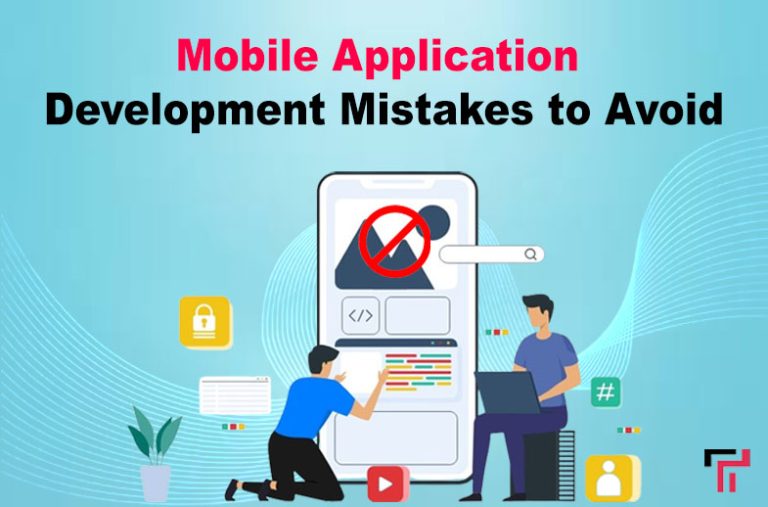Mobile application development involves numerous complex steps, and you are at the highest risk of making mistakes in some critical processes. It is a divine blessing to work in the wrong direction before directing your abilities in a positive alignment. However, integrating enormous faults into the app’s infrastructure will not let it perform the desired operations. You must cross-check all the methods to eliminate errors when developing and launching the mobile application.
In this detailed article, you will learn about the common mistakes you must avoid in mobile application development.
Mobile Application Development Mistakes to Avoid
After completely researching a vast amount of information and learning the case studies, we have listed the key mistakes you should avoid during mobile application development below.
Poor Market Research
Whenever you are on your way to developing an app, it is compulsory to research the market thoroughly. Without understanding the public’s requirements, you cannot add all the desired features and functions to your application. Firstly, you must have complete knowledge of your audience. Then, conduct thorough research to analyze your competitors and their products. It will deliver you insights into the in-demand features. Furthermore, you can add new characteristics to your mobile application, giving you a competitive edge and allowing you to move ahead of the market.
Device Compatibility
Another key mistake the developers made in mobile application development is not considering device compatibility. Android and iOS are two important versions of smartphones, and both work on different operating systems. Similarly, tablets may also differ from ordinary phones in certain aspects. The developers often produce applications for Android mobiles as others dominate them. Consequently, the users will not find you authentic and move to other apps supporting a diverse mobile range. You must cross-check this factor to ensure the multi-device compatibility of your mobile application.
Undesired Features
Although adding plenty of features and operational abilities to your mobile application is beneficial, this can also produce negative consequences. Most of the users only demand the targeted functions on the app’s interface and are quickly irritated by the other options. Therefore, you must focus on such visitors and consider their requirements. Keep things simple and accumulate only known functions in the application. It will not only positively influence the clients but also save your time and cost. Prioritizing the essential features will prevent designing a cluttered and confusing user interface.
Lack of Performance Optimization
Mobile application development is not a one-time thing. You must be very active regarding its back-end development to optimize its features and smoothen its function. Improper optimization strategies will slow down the application loading time and become the cause of crashes. Thus, it may frustrate some users, and they will hang off, leaving a bad impression on your credibility. You must devise a complete performance optimization strategy covering several aspects, like code efficiency, server response times, and data caching.

Improper Security Measures
While creating mobile applications, some developers find following the proper security measures unimportant. However, it is a paramount concern, and you must consider this when developing the app. Additionally, this requirement reaches sky-high when your app deals with sensitive data, like credit card credentials and financial transactions. Neglecting proper cybersecurity measures results in hacker attacks and data breaching activities, leading to severe consequences. Implementing robust encryption, a secure authentication process and frequent security audits will protect the user data and maintain trust in the app.
Complex User Onboarding Experience
The first encounter with the mobile application plays a definitive role in determining whether the user can continue using it. Most developers do not focus on designing a simple and interactive visitor onboarding process. Instead, they add complex elements and sign-up forms, resulting in a high churn rate. The onboarding experience must be a straightforward step and offer clear guidance on navigating the app and utilizing its interface. Do not add lengthy sign-up forms and complex procedures, like storage and camera permissions
Neglecting Cross-Platform Testing
We mentioned previously that one application may function on one platform while encountering issues on the other. It will result from neglecting the cross-platform testing during the mobile application development. Mobile app developers should conduct rigorous testing to identify the glitches and bugs users may face when using your app on other devices. Introducing different codes to add the desired functionality into the application to fix it on different screens helps you receive satisfactory user responses.
Poor App Marketing Strategy
Another key mistake in the mobile application development procedure is its poor marketing campaign. While generating the application’s interface, you must start advertisements on different platforms to hire professionals and skilled individuals. Similarly, you must launch proper marketing campaigns to tell the general audience about the features, accessibility, and usability of your mobile application. In this way, you can build a larger fan base and traffic, serving you long-term benefits and advantages.
Final Verdict
These are the most common mistakes developers often make during mobile application development. They not only cause glitches in the app’s performance but also frustrate some users. By understanding the audience requirements and analyzing the competitor’s services, you can easily add all the desired features to your app. Further, by integrating cross-platform compatibility, seamless user experience, and effective customer outreach strategies, you can take your experience to an advanced level. In addition, continuous improvements are compulsory to optimize its performance, taking you ahead of this competitive landscape.







